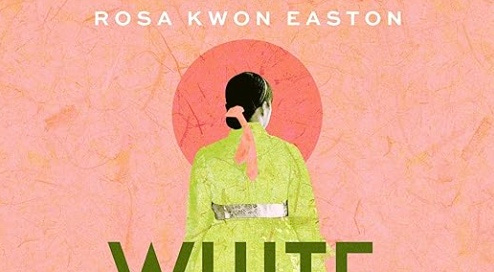BookLife Review by Carol O’Day: White Mulberry (Rosa Kwon Easton, author)
Historical fiction, Korea and Japan, 1930s and 1940s, racial discrimination, Japanese aggression, war, nursing, oppression of women, education, tuberculosis, death, widowhood, escape.
In 1928 Korea, Miyoung is eleven years-old when her parents arrange for her fifteen year-old sister to marry a Korean man living in Kyoto, Japan. After her sister emigrates, and against her Shinto mother’s wishes, Miyoung follows a teacher and a classmate to the Korean Christian church where she finds comfort to assuage her loneliness. Several years later, Miyoung’s mother (a second wife to a Korean businessman), arranges for Miyoung to travel to Kyoto to live with her sister so that Miyoung may continue her education beyond elementary school.
When Miyoung arrives in Kyoto, she finds her sister’s married life is much more humble and unhappy than expected. Nonetheless, Miyoung’s sister enrolls her in a Japanese public school. There Miyoung experiences anti-Korean discrimination and bullying. She elects to change her name to Miyoko and attempts to pass as Japanese. Korean women in Japan have significantly reduced education and employment opportunities. As Miyoko, she finds work as a nurse’s aid and is able to send money home to her ailing mother.
In Kyoto, Miyoung (Miyoko) once again finds community in the Korean church where she meets a young lawyer and Korean civil rights activist, Hojoon. The two fall in love. With no warning, Hojoon disappears. Through the church community, Miyoung learns that Hojoon has contracted tuberculosis, for which there is no cure. Hojoon writes to Miyoung and encourages her to forget him. She cannot, and when he recovers, the two reunite and marry. Consistent with tradition in Korean culture, the couple move into Hojoon’s family home. Miyoung gives birth to a son, and must surrender her work as a nurse’s aid to serve her in-laws. Her mother-in-law treats her beloved son’s daughter as a lowly servant. Hojoon’s remission from his tuberculosis is short-lived and he dies only 5 months after their son is born.
Unable to tolerate her mother-in-law’s treatment, the young widow finds employment as a nurse’s aid in Osaka. However, the job requires that she live on site in a dormitory so she separated from her young son who is left in the care of her mother-in-law and sisters-in-law. Determined to thrive, Miyoung once again passes as Japanese Miyoko. She studies relentlessly to become qualified as a nurse, though at a cost-she rarely sees her son.
Miyoung struggles to straddle her Korean and Japanese identities. She yearns for her Korean home and heritage. When she is drafted to report to duty as a Japanese war nurse in its invasion of China, Miyoung reclaims her son and flees to Korea.
Based on the life of the author’s grandmother, White Mulberry depicts the hardships faced by Korean women both in Japanese-occupied Korea and in Japan in the 1930s and 1940s. The anti-Korean sentiment and intense nationalism of the Japanese created nearly impossible conditions for Koreans. Education and employment opportunities for Koreans were severely limited. The norms of the 1930s and 1940s in both Korea and Japan further limited opportunity for women, particularly those with limited means. The choice to pass as Japanese, though one which increased opportunity for Miyoung and other Korean women, was not without cost. Living under dual identities triggered guilt, shame and required living in constant fear of discovery.
Kwon’s novel exposes important historical themes, but suffers a bit from the author’s tendency to state, rather than show by action, metaphor or symbolism, the protagonist’s feelings, thoughts and intentions of her characters. Rather than unfurling the action of the story and the plight of the characters by their reactions to the events of their lives, Kwon often sets a scene and then summarily states Miyoung’s response in a narrative. In so doing, the author undermines some of the organic integrity of the story and instead substitutes her summary shortcut for the narrative. For example, when faced with her mother-in-law’s mistreatment, instead of showing Miyoung’s pain and loneliness by Miyoung’s conduct, the author states expressly that Miyoung decides to take the job, work hard and study to make a better life for herself and her son. Despite these narrative shortfalls, the arc of Miyoung’s journey is illustrative of the difficult path endured by many Koreans in the early 20th century in Korea and Japan. It is an exploration of fortitude and determination.
Please support BookLife: Reviews for Readers and independent book sellers by purchasing White Mulberry using the Bookshop.org link below.





